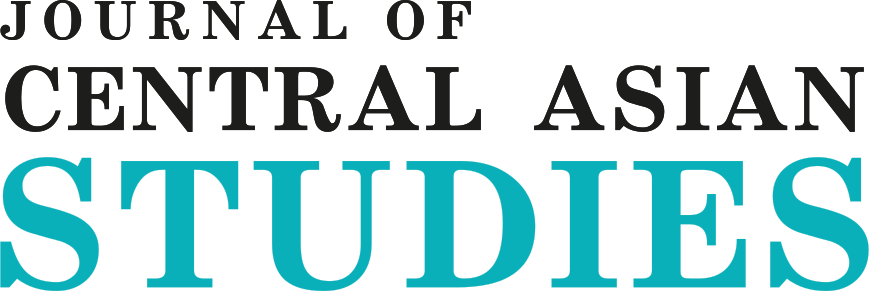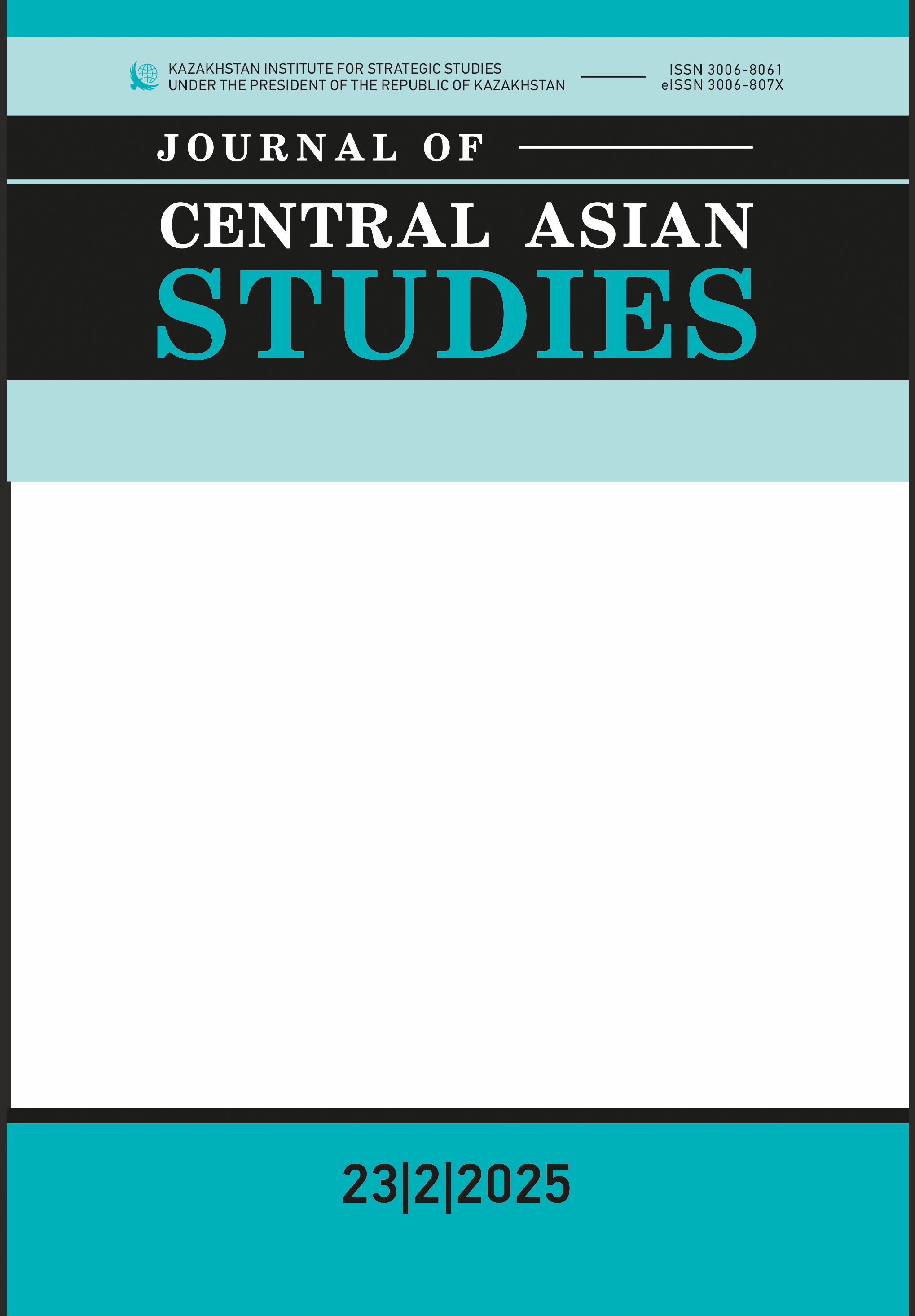Soft Power Diplomacy: A Tool for the Advancement of the US Strategy in Central Asia
DOI:
https://doi.org/10.52536/3006-807X.2025-2.003Keywords:
soft power, educational diplomacy, academic mobility, governance, geopolitical influenceAbstract
The United States has tactically used educational diplomacy in Central Asia, leveraging academic engagement as soft power and promoting democratic values. This analysis investigates the impact of U.S.-funded educational projects in Kazakhstan, Kyrgyzstan, Uzbekistan, Tajikistan, and Turkmenistan, examining how these initiatives have influenced changes in higher education reform, academic mobility, and governance. It discusses the gaps and the sustainability of these efforts by considering the geopolitical factors driving U.S. actions in the region, particularly the rising influence of China and Russia.
The analysis adopts a mixed-methods research design to accomplish these objectives, combining document analysis of policy and project evaluations from various countries.
The findings confirm that US programs have improved education systems and promoted democratic values. However, the long-term sustainability of these initiatives remains uncertain due to geopolitical boundaries, financial constraints, and competition from other foreign actors.
References
Altbach, P. G., & Knight, J. (2007). The internationalization of higher education: Motivations and realities. Journal of Studies in International Education, 11(3-4), 290–305.
Bhandari, R., & Blumenthal, P. (Eds.). (2013). International students and global mobility in higher education: National trends and new directions. Palgrave Macmillan.
Brown, L., & Jones, I. (2013). Encounters with racism and the international student experience. Studies in Higher Education, 38(7), 1004–1019.
Byrne, C., & Hall, R. (2011). Australia’s education diplomacy: International education and the development of soft power. Australian Journal of International Affairs, 65(5), 526–544.
Cantwell, B., & Maldonado-Maldonado, A. (2009). Four stories: Confronting contemporary ideas about globalisation and internationalisation in higher education. Globalisation, Societies and Education, 7(3), 289–306.
Castles, S. (2007). Migration and development: Perspectives from the South. International Organization for Migration.
Chitty, N. (2017). The Routledge handbook of soft power. Routledge.
Deardorff, D. K. (2009). Implementing intercultural competence assessment. The SAGE Handbook of Intercultural Competence, 477–491.
Findlay, A. M., King, R., Smith, F. M., Geddes, A., & Skeldon, R. (2012). World class? An investigation of globalisation, difference and international student mobility. Transactions of the Institute of British Geographers, 37(1), 118–131.
Hazelkorn, E. (2015). Rankings and the reshaping of higher education: The battle for world-class excellence. Palgrave Macmillan.
Horta, H. (2018). The impact of academic inbreeding on scientific effectiveness. Scientometrics, 114(1), 135–154.
Kaneva, N. (2012). Nation branding and public diplomacy: Challenges and opportunities. The Fletcher Forum of World Affairs, 36(3), 65–80.
Knight, J. (2004). Internationalization remodeled: Definition, approaches, and rationales. Journal of Studies in International Education, 8(1), 5–31.
Knight, J. (2015). Updating the definition of internationalization. International Higher Education, 33, 2–3.
Leask, B. (2009). Using formal and informal curricula to improve interactions between home and international students. Journal of Studies in International Education, 13(2), 205–221.
Marginson, S. (2007). Global position and position taking: The case of Australia. Journal of Studies in International Education, 11(1), 5–32.
Marginson, S. (2016). High Participation Systems of Higher Education. The Journal of Higher Education, 87(2), 243-271. https://doi.org/10.1080/00221546.2016.11777401.
McClory, J. (2018). The Soft Power 30: A global ranking of soft power. Portland Communications.
Melissen, J. (Ed.). (2005). The new public diplomacy: Soft power in international relations. Palgrave Macmillan.
Mohrman, K., Ma, W., & Baker, D. (2008). The research university in transition: The emerging global model. Higher Education Policy, 21(1), 5–27.
Nye, J. S. (1990). Bound to lead: The changing nature of American power. Basic Books.
Nye, J. S. (2004). Soft power: The means to success in world politics. PublicAffairs.
Nye, J. S. (2008). Public diplomacy and soft power. The ANNALS of the American Academy of Political and Social Science, 616(1), 94–109.
Robertson, S. L., & Dale, R. (2013). The social justice implications of privatisation in education governance frameworks. In Verger et al. (Eds.), Global education policy and international development. Bloomsbury.
Roselle, L., Miskimmon, A., & O’Loughlin, B. (2014). Strategic narrative: A new means to understand soft power. Media, War & Conflict, 7(1), 70–84.
Rumbley, L. E. (2013). Internationalization in the universities of Europe: Studies, strategies and challenges. In Global perspectives on higher education. Sense Publishers.
Sun, H. (2023). Confucius Institutes and Chinese soft power: Between controversy and communication. Journal of Contemporary China, 32(137), 18–34.
Verbik, L., & Lasanowski, V. (2007). International student mobility: Patterns and trends. World Education News & Reviews, 20(10), 1–12.
Wojciuk, A., Michałek, M., & Stormowska, M. (2015). Education as a source and tool of soft power in international relations. European Political Science, 14(3), 299–317.
Yang, R. (2010). Soft power and higher education: An examination of China’s Confucius Institutes. Globalisation, Societies and Education, 8(2), 235–245.
Zaharna, R. S. (2010). Battles to bridges: US strategic communication and public diplomacy after 9/11. Palgrave Macmillan.
Downloads
Published
Issue
Section
License
Copyright (c) 2025 Torebekova Z., Baktiyarova G.

This work is licensed under a Creative Commons Attribution 4.0 International License.











 Open content is licensed under the CC-BY
Open content is licensed under the CC-BY 